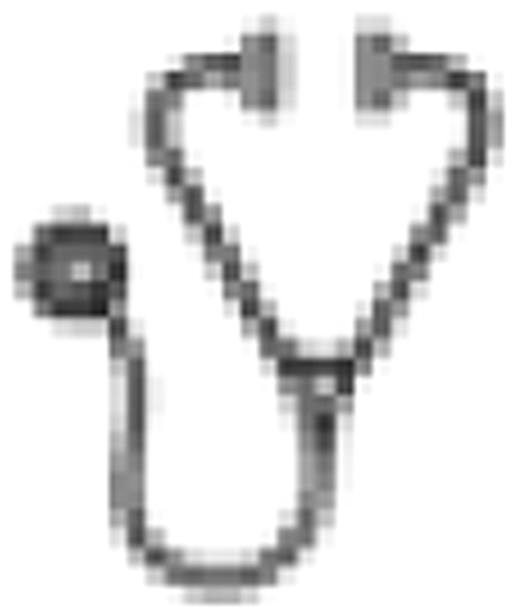Abstract
Abstract 1869
Three disease-modifying drugs have been approved by the US Food and Drug Administration for first-line therapy of myelodysplastic syndromes (MDS). There is no accepted standard of care for patients (pts) who fail currently approved therapies, particularly the hypomethylating agents. This is the first study designed to determine the appropriate dose, and to assess the efficacy and safety of oral clofarabine (CLO) specifically in higher-risk MDS or secondary acute myeloid leukemia (sAML) pts who failed treatment with a hypomethylating agent.
This phase IIa, open-label, multi-center study of fixed-dose oral CLO (daily × 5 days of a 4-week cycle) enrolled adult pts with pathologically confirmed MDS or sAML (following a history of MDS) who failed up to 2 prior treatment regimens (including ≥ 1 hypomethylating agent) with failure defined as no evidence of response or being progressive under therapy (pts must have received 4 cycles of hypomethylating agents). The primary endpoints were unacceptable drug-related toxicities and overall response rate (ORR) defined as complete remission (CR) + marrow CR + partial remission (PR) + hematological improvement (HI) for MDS pts and CR + CR with incomplete peripheral blood count recovery (CRi) + PR for AML pts. Initially, pts were randomized to receive 55mg or 35mg of oral CLO daily × 5 days. Based on emerging safety data, primarily renal and infectious complications, the protocol was amended and randomization into the 55mg cohort was closed. After review of the initial data for 35mg cohort (n=8), the dose of CLO was reduced to 25mg, with the intent of improving the adverse event profile observed in these pts. Patients could receive a maximum of 8 cycles and response was assessed after cycles 2, 4, 6, and 8.
Of the 27 pts enrolled in the study from Sep 2007 - Jan 2010 (55mg [n=4], 35mg [n=8] and 25mg [n=15]) demographic and safety data are available for 22 pts (55mg [n=4], 35mg [n=8] and 25mg [n=10]). Median age was 70 years (range 41–82) with 55% male. IPSS scores at study entry were (median=2.0): 1.5–2.0 (n=16), ≥2.5 (n=6); 8 pts (36%) had intermediate, 6 pts (27%) had poor risk and 8 pts (36%) had favorable cytogenetics; and 11 pts (50%) were transfusion dependent at baseline. Previous treatment with hypomethylating agents included: decitabine (n=10 [45%], azacitidine (n=11 [50%]), or both agents (n=1 [5%]). At study entry 8 pts (36%) had relapsed disease while 13 pts (64%) were refractory and 1 pt (5%) had prior inadequate treatment. Grade 3 or higher hematologic adverse events (regardless of relationship) reported in ≥10% of pts included anemia (54%), thrombocytopenia (41%), neutropenia (36%), febrile neutropenia (32%), leukopenia (32%). Grade 3 or higher non-hematologic toxicities (regardless of relationship) included pneumonia (36%), hypokalemia (27%), hypertension (23%), renal failure (18%), asthenia (14%), fatigue (14%), respiratory distress and/or failure (14%). Serious adverse events (SAE, regardless of relationship) were reported in 77% of pts. The most frequently reported SAE was febrile neutropenia (32%). The 30-day mortality was 50% in the 55 mg cohort (n=2), 13% in the 35 mg cohort (n=1) and 0% in the 25 for an overall 30-day mortality rate of 14%. Pts came off study for the following reasons: adverse event (n=8), progressive disease (n=7), other (n=5). Preliminary efficacy data are available for 16 pts, 35mg (n=6) and 25mg (n=10). Efficacy data are not available for pts enrolled in the 55mg cohort, because no pts completed the required two cycles for efficacy assessment, before the protocol was amended to allow for bone marrow evaluation at the end of cycle 1. The ORR is 31% (5/16 pts). Complete remission was achieved in 1 pt (35mg cohort) and marrow CR in 4 pts (25mg cohort). Among pts with marrow CR, 1 achieved HI-Erythroid and became transfusion independent and 1 pt had unconfirmed HI-Neutrophil. The median number of treatment cycles for the 16 patients with response assessment was 2 with a majority of responses occurring after the first cycle.
These preliminary data suggest that fixed-dose oral CLO administered at 25mg daily × 5 days in pts previously treated for MDS with hypomethylating agents has an acceptable response rate and safety profile and warrants continued investigation.
Sekeres:Genzyme: Research Funding. Off Label Use: Clofarabine injection (Clolar) is approved by the US FDA for the treatment of pediatric patients 1 to 21 years old with relapsed or refractory acute lymphoblastic leukemia after at least two prior regimens. This trial examines the use of oral clofarabine in patients with MDS. Roboz:Genzyme Corporation: Research Funding. Odenike:Genzyme Corporation: Research Funding. Agura:Genzyme Corporation: Honoraria, Membership on an entity's Board of Directors or advisory committees, Research Funding. Powell:Genzyme Corporation: Honoraria, Membership on an entity's Board of Directors or advisory committees, Research Funding. Ewesuedo:Genzyme Corporation: Employment, Equity Ownership. Vasconcelles:Genzyme Corporation: Employment, Equity Ownership. Faderl:Genzyme: Consultancy, Honoraria, Membership on an entity's Board of Directors or advisory committees, Research Funding. Kantarjian:Genzyme: Consultancy, Honoraria, Membership on an entity's Board of Directors or advisory committees, Research Funding.

This icon denotes an abstract that is clinically relevant.
Author notes
Asterisk with author names denotes non-ASH members.

This feature is available to Subscribers Only
Sign In or Create an Account Close Modal